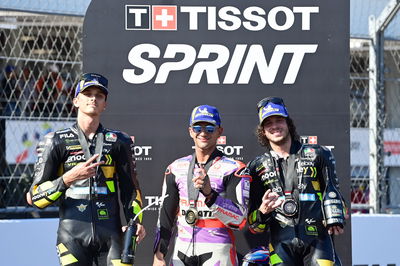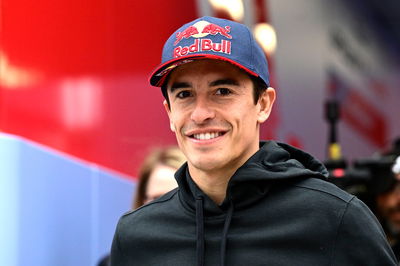New WorldSBK combined weight a precursor for MotoGP?

Bigger MotoGP riders have long argued that the lack of a combined weight gives an unfair advantage to smaller riders in terms of acceleration, top speed (aerodynamics) and tyre wear.
The counterargument is that very small riders face a disadvantage during hard braking, generating tyre heat in cold or wet conditions and when trying to physically lever a bike from side-to-side in fast corners.
For such reasons, and to avoid loading the bike of a light rider with unsafe amounts of ballast, WorldSBK’s compromise is to impose a minimum bike weight (168kg) plus a new rider reference weight of 80kg (with equipment).
Riders weighing less than the reference will now be required to carry 0.5kg of ballast for every 1kg they are under. In other words, 50% of the difference, rather than the normal 100%. It was expected that the lightest WorldSBK riders will need to add 5-6kg to their machines this year, although reigning champion Alvaro Bautista is tipped to need 7kg.
The impact of the WorldSBK weight change will be keenly watched by the likes of new Repsol Honda rider Luca Marini.
The Italian - the tallest but not the heaviest rider on the current MotoGP grid - has long campaigned for the use of a ‘democratic’ combined weight in the premier class and had hoped WorldSBK would lead the way over a year ago. The Moto3 and Moto2 grand prix classes already have a rider and bike combined weight.
"They are trying it in SBK [in 2024]. I am very curious about this and maybe in the future it will come to MotoGP," Marini said.
The following list shows the height and weight of each rider on the 2024 MotoGP grid, according to MotoGP.com.
The list shows a difference of just 11kg between the smallest to largest riders, so is a combined weight even necessary?
But just a few years ago, the difference between Dani Pedrosa (51kg/160cm) and Danilo Petrucci (78kg/181cm) stood at 27kg. And without a combined weight, the concern is that bigger riders might not even be considered for MotoGP.
There is always the risk that things will go too far the other way, and smaller riders become overly disadvantaged. However, it is generally easier for a smaller rider to gain some weight and muscle, than for an already lean tall rider to try and lose even more.
- Augusto Fernandez: 72kg/180cm
- Alex Rins: 72kg/176cm
- Takaaki Nakagami: 70kg/175cm
- Luca Marini: 69kg/184cm
- Joan Mir: 69kg/181cm
- Raul Fernandez: 68kg/179cm
- Fabio di Giannantonio: 68kg/175cm
- Johann Zarco: 68kg/171cm
- Francesco Bagnaia: 67kg/176cm
- Franco Morbidelli: 67kg/176cm
- Aleix Espargaro: 66kg/180cm
- Jorge Martin: 65kg/167cm
- Alex Marquez: 65kg/180cm
- Fabio Quartararo: 64kg/177cm
- Jack Miller: 64kg/173cm
- Maverick Vinales: 64kg/171cm
- Marc Marquez: 64kg/169cm
- Enea Bastianini: 64kg/168cm
- Brad Binder: 63kg/170cm
- Miguel Oliveira: 63kg/170cm
- Pedro Acosta: 62kg/171cm
- Marco Bezzecchi: 61kg/174cm












